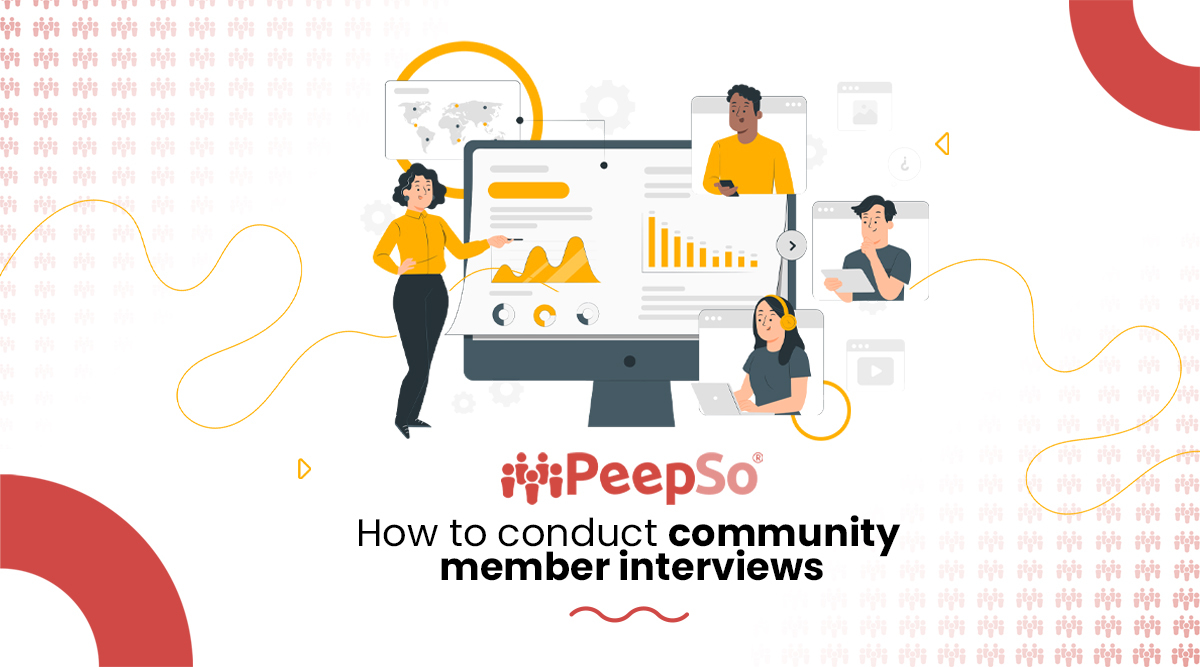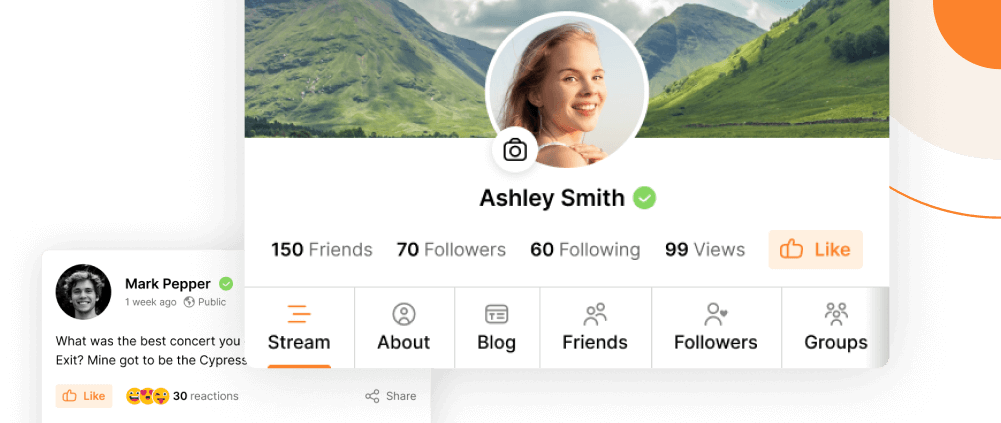When it comes to community management, finding your purpose, or increasing value for your members, we often talk about interviewing members. These interviews are such powerful sources of insight that we believe they can help you surmount virtually any challenge the community faces.
But how do you actually conduct this kind of interview? What questions should you ask? What if your members all decline and you end up alienating them? Well, that’s what we’re going to address here. (And don’t worry—if you approach it the right way, requesting an interview will never upset or alienate your members!)
Recap: Why are member interviews so important?
Every successful community is literally built around its members. What many community creators do is build a space built on assumptions: “We solve this kind of problem, so people will come here.” The problem is that you can’t ever escape your own biases, beliefs, and worldview. In order for your community to provide long-term and increasing value to members, your decisions must be built around their biases, beliefs, and worldviews.
Once you’re off the ground, you can’t just guess how much members would be willing to pay for membership, or what features they need for a better experience, or what causes them frustration with the platform. You need to get it directly from them. And sometimes this means accepting and digesting tough truths or criticisms. But if you can avoid taking it personally, the data gathered from interviews will allow you to make transformational changes to your community—changes which are tailored to your members’ exact needs and desires!
1 – What’s the purpose of your research?
“Getting to know our members” might work as a general principle, but when conducting interviews you need a razor-sharp focus. This will be individual, but some examples might be understanding:
- What convinced free members to join a paid tier? – So you can convert more members to paid tiers
- The common traits among your ‘superusers’ – So you can identify potential future superusers and encourage them
- What members need in order to feel comfortable contributing/compelled to contribute – To increase participation in discussions
- Any issues with user experience on the platform – To improve UX
- How members define your value proposition or “what the community is all about” – To see if your expectations for the community align with the reality
These are just demonstrative examples, but you can already see how the focus for any interview would change depending on the purpose.
2 – Identify good-fit interview candidates
If you have a specific purpose, you may require specific participants. Don’t open up invites to the entire community unless you’re searching for something applicable to the entire community. When sending invites for interview, be candid in your messaging: “We are looking to improve the community, specifically with regard to X, and want the perspective of some of our members. Would you be happy to have a 30-minute call to talk about X and Y?” Go to lengths to make sure participants are comfortable and reassure them that any feedback, especially negative feedback, will be hugely appreciated. Offer a range of times and days to suit them, and try to frame everything as “Thanks for helping us”.
3 – Plan your questions and conduct the interview
Remember that you’re not looking for brand-new information from every interviewee—repetition, if it comes up naturally, is valuable. It highlights significance when multiple different members all bring it up. So with that in mind, you need to ask all members the same set of questions. The conversation can meander and move about, but it’s your job to bring everything back to the original purpose.
The goal of these interviews is not just to “get answers to questions”, it’s to get valuable insights you can use to radically improve your community. While there is a place for “yes/no” questions in this kind of interview, we suggest using open-ended questions wherever possible. If you do want to ask a yes/no question (“Have our recent upgrades made the platform easier to use?”) you should always give members room to elaborate on their answer (“Can you go into more detail on that?”).
4 – Record and analyze the results
With the member’s permission, always record your calls. This means you don’t have to take any notes during the discussion (which helps you manage the discussion much more effectively) and allows you to review each question in detail later. Then armed with sheets of paper, an online spreadsheet or another method, go through the answers with your team. Use the answers to find trends, spot problems, and develop potential solutions. If you have a productive talk with 5-10 members about how to improve user experience within your community platform, then everything you possibly need to make improvements will be sitting right there in front of you.
The final step is, of course, implementation. While implementation is a topic for another time, the simplest thing you can do is note down how long every fix or adjustment will take to do, then simply put them in the diary as essential tasks! Then if you want to assess impact down the line, get back in touch with those members after implementing and see what they make of the differences.


Reactions & comments
Comments